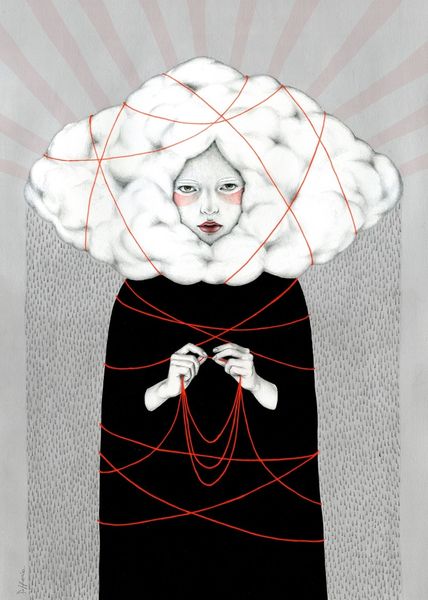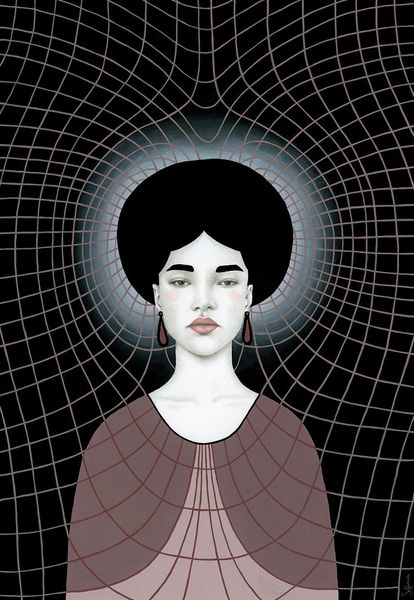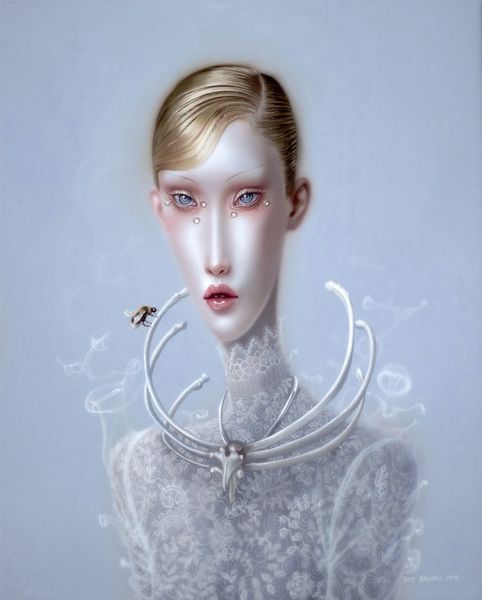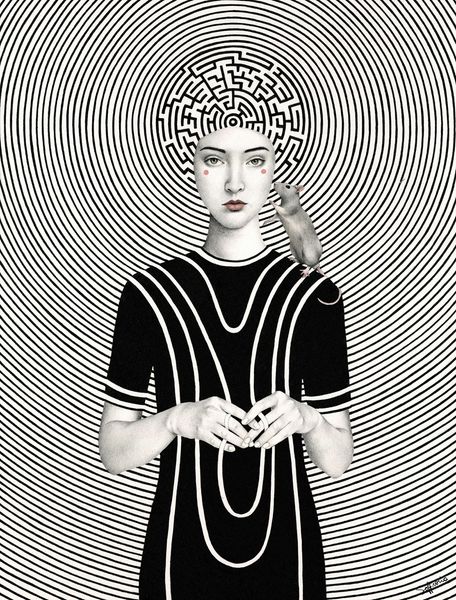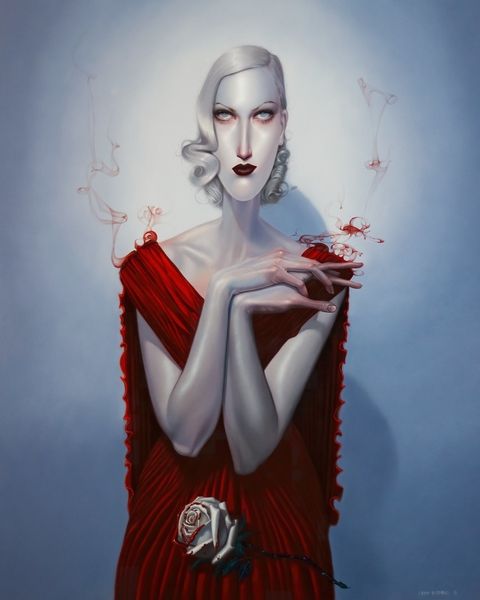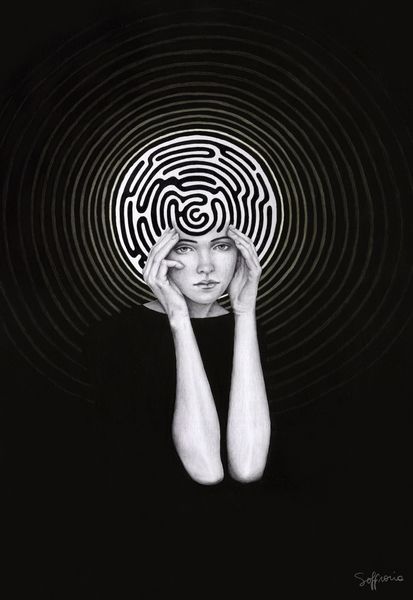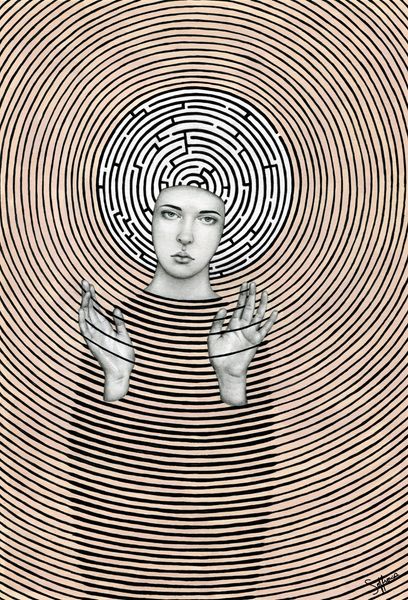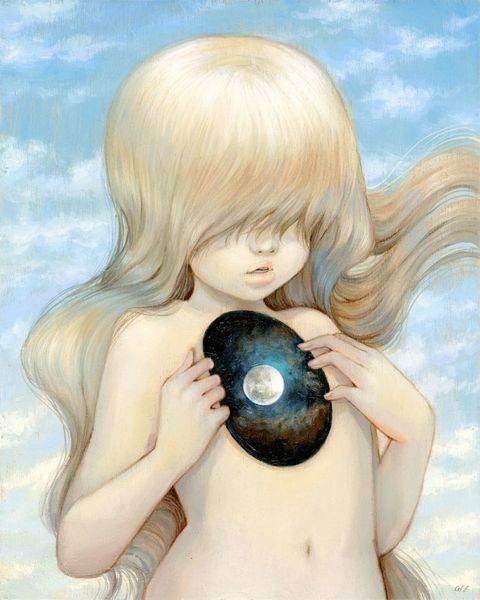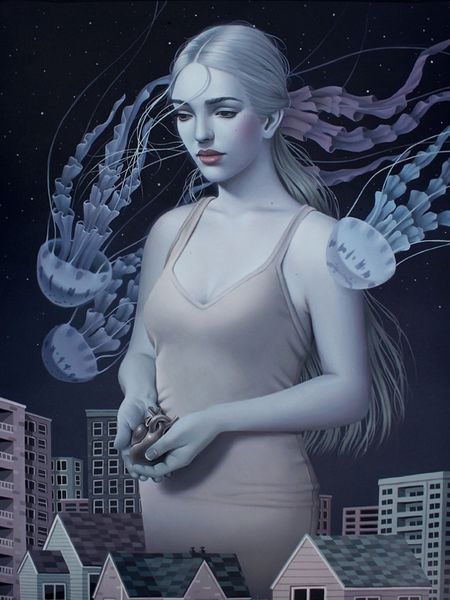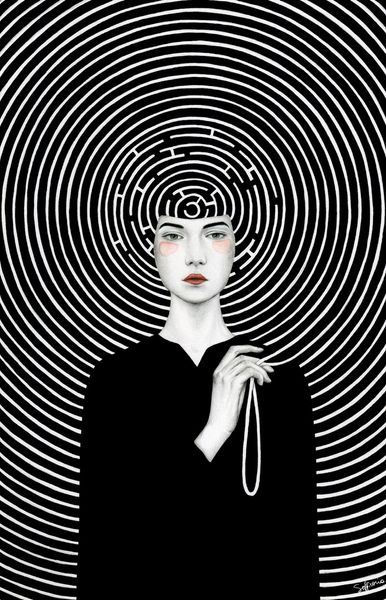
drawing, paper
#
portrait
#
drawing
#
negative space
#
figuration
#
paper
#
geometric
#
surrealism
#
portrait art
Copyright: Modern Artists: Artvee
Editor: This drawing by Sofia Bonati is called “Tara.” It seems pretty recent, but I'm not sure of the exact date. It’s done with some kind of drawing medium, probably on paper. I'm struck by how the figure blends into the geometric background – it almost feels like she's being consumed or created by it. What do you see in this piece? Art Historian: The visual construction of the piece indeed suggests that. I am particularly drawn to the symbolism embedded in this portrait. The name, “Tara,” carries significant weight, especially within Buddhist traditions. Tara is often revered as a Bodhisattva of compassion, known for her role as a protector and savior. So what might Bonati be conveying by portraying Tara enmeshed within a rigid, almost gravitational, geometric matrix? Editor: I hadn't even thought about the Buddhist reference! Maybe the grid represents systems of oppression, or the complex structures that keep people bound, and maybe even ways the namesake defies such systemic limits? Art Historian: Precisely! And it extends beyond simply depicting confinement. I think Bonati compels us to reflect on how identities are constructed and often constricted by social, political, and cultural frameworks. The act of creation – the knitting in her hands – could be read as a reclamation of agency, or the constant need to recreate our place in the universe. Considering Bonati is a contemporary Argentinian female artist – I am drawn to explore how gender, identity, and cultural background impact artistic creation. It really encourages thinking on our own placement, or displacement, in a world where these networks of control often subtly dictate our very existence. What does that resonate with you personally? Editor: I suppose seeing her working with the strings suggests taking control, that identities aren't fixed. Thank you; this connection with systemic identities makes a big difference in how I see this portrait! Art Historian: Yes, absolutely. Visual analysis, and art history itself, requires that intersectional understanding if we’re to extract the nuanced richness within works such as Bonati’s “Tara.” It’s about fostering dialogue.
Comments
No comments
Be the first to comment and join the conversation on the ultimate creative platform.
